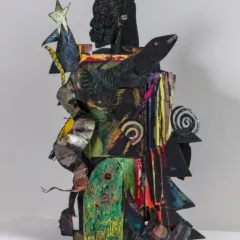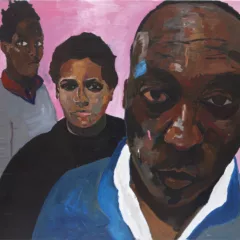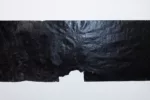“Black is the Color” is a documentary with a two-fold mission — to tell how African American art and artists have been, until recently, almost systematically excluded from American art history (and, by extension, from American museums); and to insert the story of some of the excluded artists into the American art story. Exclusion is not really a shock, given that the art world is a microcosm of the bigger America, which routinely stacks the deck against people of color, but the way the movie lays out the facts makes for a gripping and heart-sore-making story.
This short, 52-minute art history corrective by filmmaker Jacques Goldstein juxtaposes the history of Black people in America with the history of Black art, and among other pertinent questions, asks “What is a Black painting?” There’s no one answer to that question, but the film posits that Black art started as and continues to be a political act, a reaction to and correction of racial stereotyping. Edmonia Lewis’s marble sculpture “Forever Free, (1867)” showing a slave man and woman, their chains broken, is an early example of Black art that is filled with uplift and correcting of racial stereotypes. Art historian Eric Foner says it’s an optimistic piece. “Pessimism comes later” in Black art, he says.
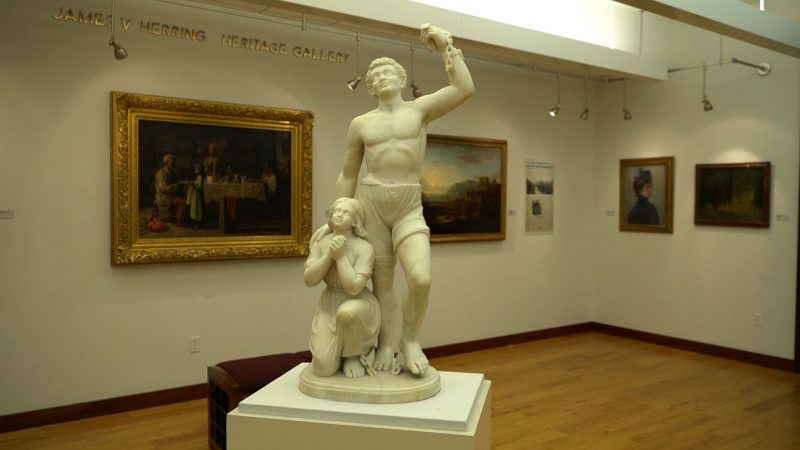
The film weaves together archival still images and film clips to illustrate America’s turbulent times and rampant racism through eras starting post-Civil War through today’s Black Lives Matter years. Interviews with art historians clarify the art story, and focus notably on the Met Museum’s 1969 “Harlem on My Mind,” which excluded African American artists from the exhibit and catalog and stirred up a firestorm of controversy and protest that had the effect of opening the museum doors a crack to African American artists. In one telling sequence, the African American collector, Walter Evans, talks about collecting Black art in the 1970s for his daughters, because they couldn’t see Black art elsewhere. “I was doing the work of the Museums,” he says.
In a movie that packs a 100-year sweep of history, the focus is razor sharp and so is the pacing. An omniscient narrator gives pointed commentary to historical film clips that show the march of racial oppression; the recurring protest movements; and the music and art created through the ages. From the jazz percussion riff that opens the movie to a whistled folk melody to a short clip of Ornette Coleman’s jazz abstractions, music is a big part of the film, setting the scenes, and washing over the footage and the narration, seemingly in complete sync with both.
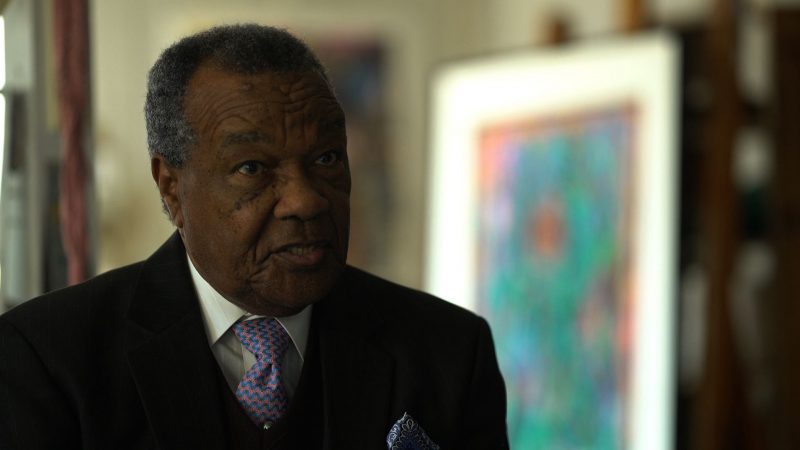
Art historians Richard Powell (Duke University), Eric Foner (Columbia) David Driskell (artist and art historian), Robert O’Meally (Columbia) comment on artists Aaron Douglas, Henry Ossawa Tanner, Jacob Lawrence, Elizabeth Cattlett and Robert Thompson, among others. Memorable comments include Richard Powell, responding to an optimistic piece in the New York Times in 2015 suggesting that Black art is now “marching into museums,” by saying “It’s kind of late…(But) better late than never.”
Following a passage depicting a series of highly offensive minstrel posters of the post-Civil War era, David Driskell talks of Henry Osawa Tanner, PAFA graduate and student of Thomas Eakins, who moved to Paris, where he could thrive as an artist and equal of other artists, and not be pigeonholed as a “Black artist.” Tanner painted a couple beautiful and heartfelt works in response to cultural stereotypes (his “Banjo Lesson” is a direct refutation of the minstrel stereotype) and was applauded by the Paris salons. But later he abandoned painting about the Black experience and turned to biblical and other themes.
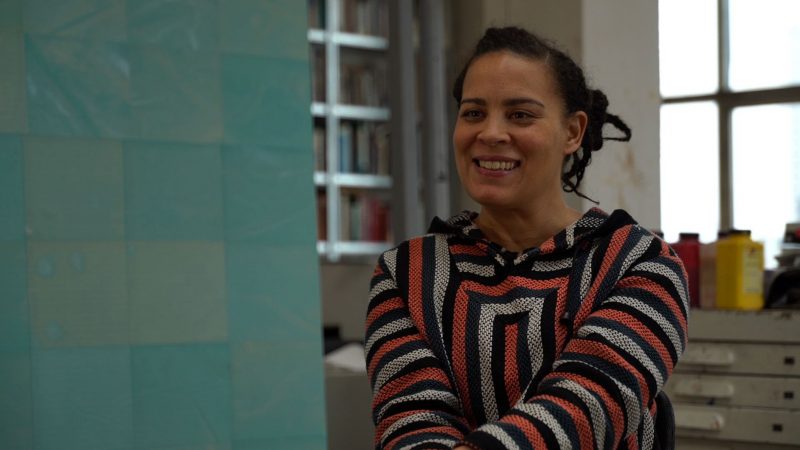
In some of the best segments in the film, artists Ellen Gallagher and Whitfield Lovell appear in their studios talking quietly about their work and their influences. With voice overlay, you see the artists working — Lovell, drawing portraits with charcoal on wood planks, full-scale images of historical African Americans. Inspired by Horace Pippin’s “The End of War,” a painting in which the self-taught Pippin painted Black soldiers at war in such a way that they disappear in the landscape. Lovell, unlike Pippin, is making Black people visible, he says, appropriating images and reclaiming their identities for a new generation.
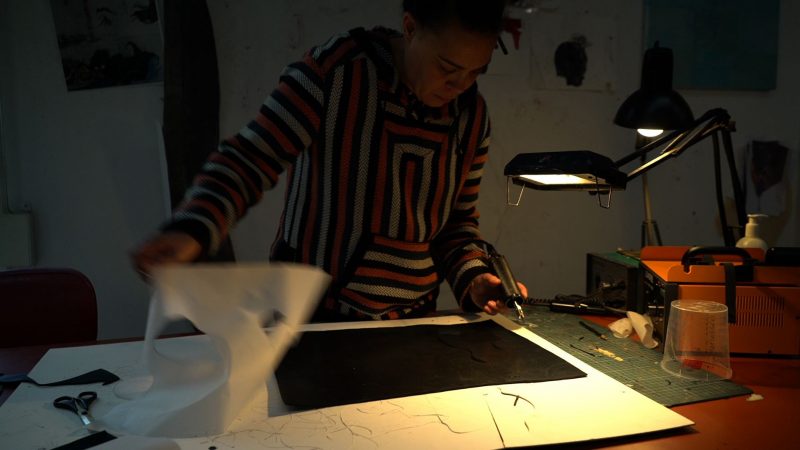
Gallagher talks about her work with images of Black hair and wigs in her series “Deluxe,” saying “Black women’s hair is a site of contention.” Wigs are about assimilating. But, with styles called “La Sheba,” and other foreign-sounding names, there is an identification with the exotic as well as a nod to honoring the past. Gallagher is an example of an artist who uses distance and humor in her work, tactics not available to earlier artists.
The movie ends on the note that nowadays, Black art and artists are freed from the need to make uplifting images. They can work abstract, use humor and parody, and make use of any tool in the toolbox. As Duke art historian Powell says, artists are responding to complex times. They’re not strictly tied to the uplift agenda, and that makes it exciting and a little unpredictable.
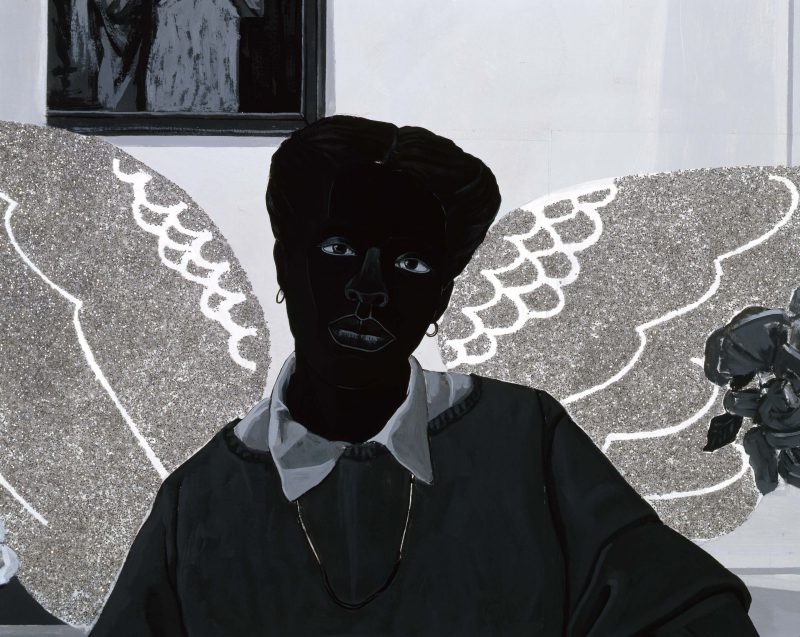
Because the film is so tightly paced, the ending seems abrupt when it comes. And it’s not entirely upbeat. But it gives credit to the hard working artists, like Kerry James Marshall, for never letting go the mantra “Black is the Color.”
Black is the Color
Available from Icarus Films, the distributor of the film, on DVD for $24.98.
52 minutes / Color
English; German; French / English subtitles
Closed Captioned
Release: 2016
Also available to rent or buy at Amazon.com.


